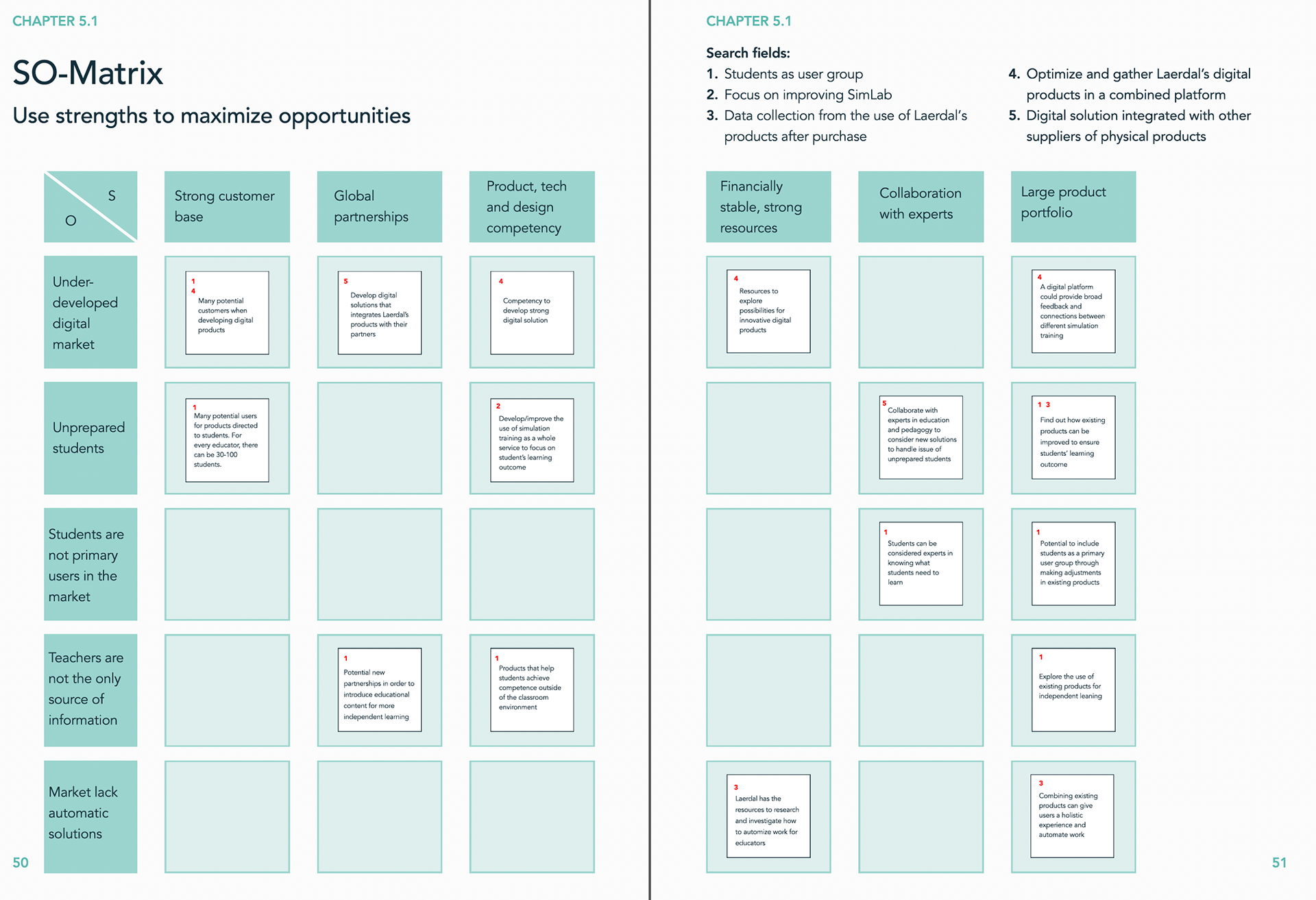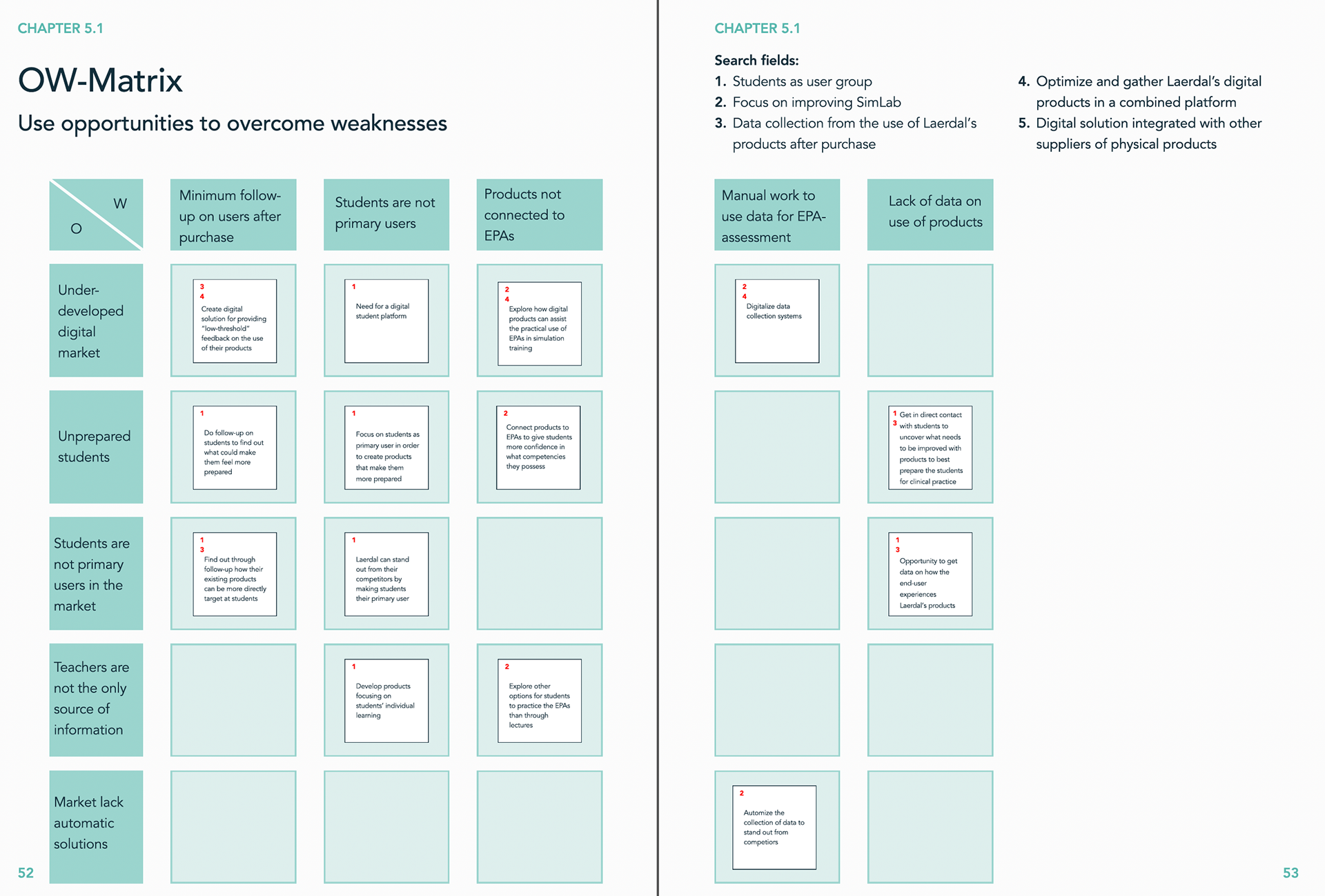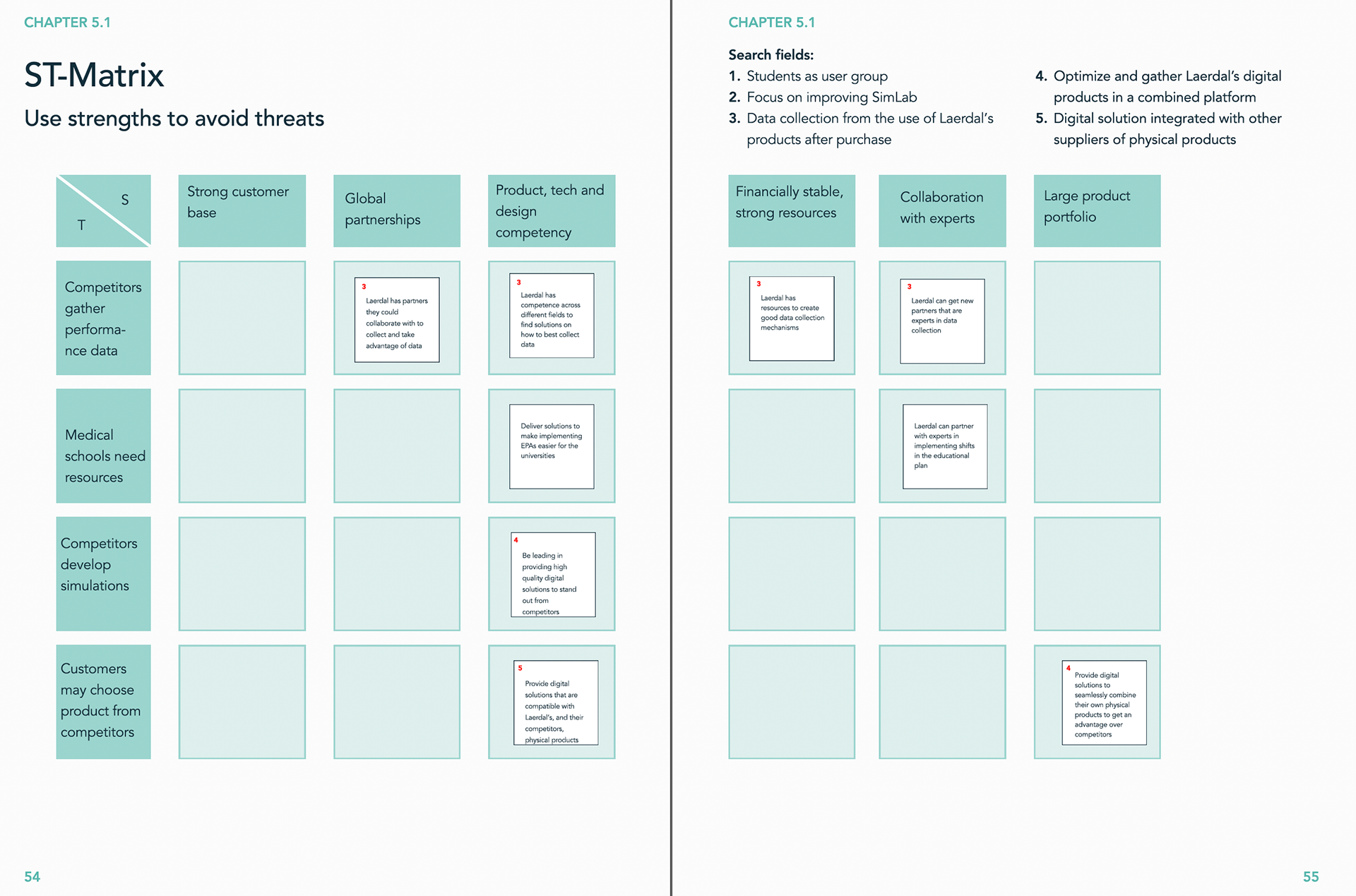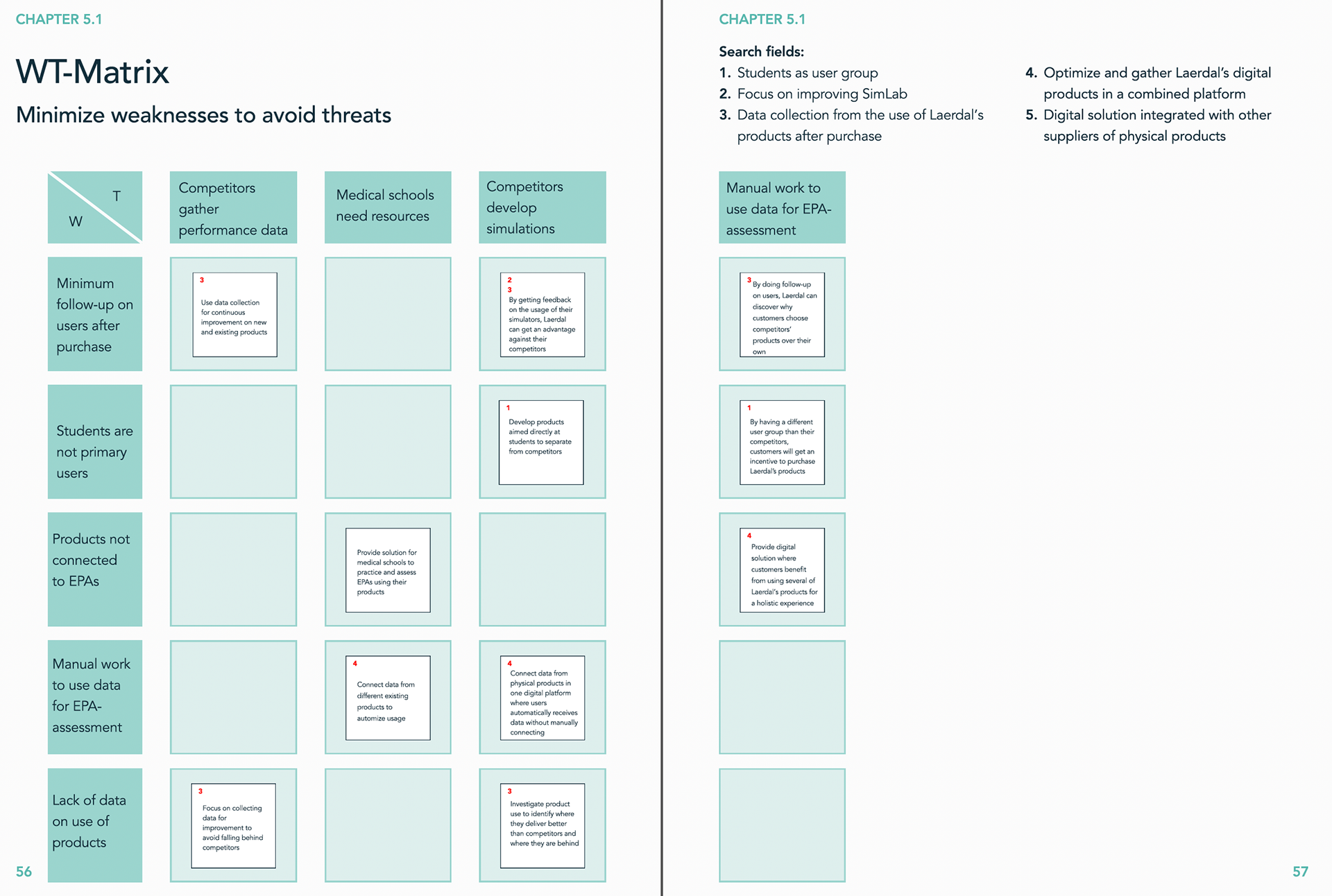Project in collaboration with Lisa Hanevold, Michelle Lous and Ane Sophie Forseth
TPD4166 Strategic design - Spring 2024
Service design, Strategic design
During the spring 2024, I worked on a project for Laerdal Medical in collaboration with three other design students. The project aim was to develop a strategic direction for Laerdal Medical AS, a global company developing physical and digital products for healthcare simulation, medical education and resuscitation.
We were asked to explore how Laerdal can leverage their existing products, or develop new products or services to meet the needs for medical education institutions in relation to EPA-based assessment. Assessment based on Enstrustable Professional Activities (EPAs) is a framework developed to ensure that medical education prepares students for the medical profession. Instead of traditional clinical and written examinations, students are assessed over a period of time in real-life clinical settings. Laerdal produces simulation equipment used in education, and needs to cater to new demands as the education develops.
The project lasted from January to May, starting with an internal and external analysis of the company. The strategic analysis consisted of a SWOT-analysis that lead to five search fields. Through a bottle neck analysis we narrowed down the search fields and developed a strategic direction based on the areas that Laerdal found most interesting in our work.
The process
In the beginning we did an internal and external analysis of the company. While two team-members conducted an internal analysis, I and one other designer explored Laerdal’s position in the marked, their competitors, their partners and trends within medical education. Some of our key findings from the external analysis is stated to the right.
- Few products in the simulation markets directly targets medical schools considering changes in education after implementation of EPAs
- Few products directly targets students in simulation training
-Medical schools usually buys simulation equipment from many different manufactureres
-As educational practice is changing, students are more independent and gather information from many sources, not just from their professors in the classroom
- Some of Laerdal’s competitors have actively started collecting to uncover where medical schools and students lack services or products to reach competencies.
After conducting the internal and external analysis, we started a strategic analysis by combining our findings. From the internal analysis, we identifies strengths and weaknesses within Laerdal. From the external analysis, we identified opportunities and threats. We organized the findings in a SWOT-matrix Later we cross-analyzed the findings, and discussed ideas and possibilites.
We organized the strengths, weaknesses, opportunities and threats in a SWOT-matrix




When cross analyzing the findings from our SWOT, we noted ideas taking advantage of the strengths and opportunities, or to minimize weaknesses or avoid threats. We then combined the ideas to five search fields to explore further. These are listed to the right.
1. Students as a user group
2. Focus on improving SimLab
3. Data collection from the use of Laerdal's products after purchase
4. Optimize and gather Laerdal's digital products in a combined platform
5. Digital solution integrated with other suppliers of physical products
For every search field we provided background, defined a goal. We also defined the positive and negative aspects and potential ideas for products or services. We worked with search fields separately before discussing and iterating together. I primarily worked with search field 2 and 5.
After researching and defining the search fields, we presented them to Laerdal to get feedback. When discussion the different directions with Laerdal we found that three of the fields were interesting to develop further. After iteration we defined two final search fields, and ended up combining them when developing the strategic plan.
The result
After narrowing the focus through the bottle neck analysis, we defined a problem statement and a goal for the strategic plan. This was important to ensure that we answered the right questions and solved the right issues when working with the strategic plan. This was based on feedback and discussion with Laerdal when we presented the final search fields, as well as a "wanted future" that Laerdal had defined prior to our work.
After narrowing our focus through the strategic analysis, we defined a problem statement to ensure that we tackled the right challenges with the strategic plan
We defined two main goals to keep in focus when developing a strategic plan.
After defining the problem and goal for the strategic direction, we developed a short-term, mid-term and long-term plan. We defined goals for every term, and steps to reach them, as well a description of the context, the pain points solved, the stakeholders involved, the investment and gains for the medical students and for Laerdal.
My role
Collaboration and close communication was key in this project and we had many discussions and feedback sessions with each other throughout the whole process. However, as Laerdal is a large company and the scope of the project was broad, we had to explore different directions withing the team.
I took a deep-dive into the concept of Entrustable Professional Activities and medical education. I looked at the process of implementing EPAs in medical education institutions, the challenges and facilitators. I also focused on understanding the historical development of the framework and examined the research done from pilot-testing EPAs in medical collages. In addition I explored Laerdal's ongoing work connected to EPAs and how simulation training is used in medical education, both in general and related to EPAs. My job was to ensure that our work was relevant and fitting within the context of medical education in the US (the main customer) and the current status of EPA-based assessment.